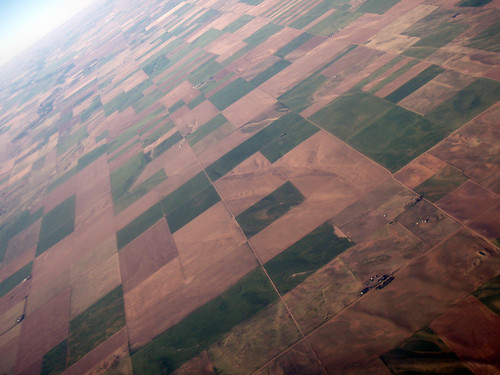There are three main scattering types in the atmosphere: Rayleigh, Mie, and the Tyndall Effect. Most of the color of the sky comes from the upper atmosphere, and is thus Rayleigh scattering, where the particles are much smaller than the wavelength of light being scattered (i.e., N2 and O2 molecules; they are about the same size, and thus scatter sunlight in roughly the same way, and so can treated as identical for our purposes). Closer to the ground, Mie scattering dominates, as tiny dust grains and other particles can be suspended in the air, and these are about as large as the wavelengths of visible light. Mie scattering is also much stronger than Rayleigh scattering; the latter only dominates in very tenuous environments (but the upper atmosphere is far, far larger than the lower bit). The Tyndall Effect really only comes into play with things like clouds and fog; most of time, the dust is not thick enough for it to dominate. Thus, the blue in Akumz' photos is a mix of Mie and Tyndall scattering, with the majority of it being Mie scattering.
Kanastrous wrote:nitpick - blue skies are mostly a product of nitrogen refraction, not oxygen (the atmosphere being mostly nitrogen). The Tyndall effect, it's called.
No. If it were refraction, we would only see it in the direction of the Sun (air's IOR is so close to 1 that most of the time it can be treated as a vacuum). I already covered why it isn't the Tyndall Effect for the most part.
Broomstick wrote:Really? I thought it was oxygen. Could it be some of both?
Yes, it is due to both (see above), but mostly nitrogen since the air is 78% that, while oxygen makes up only 21% of the total.

















